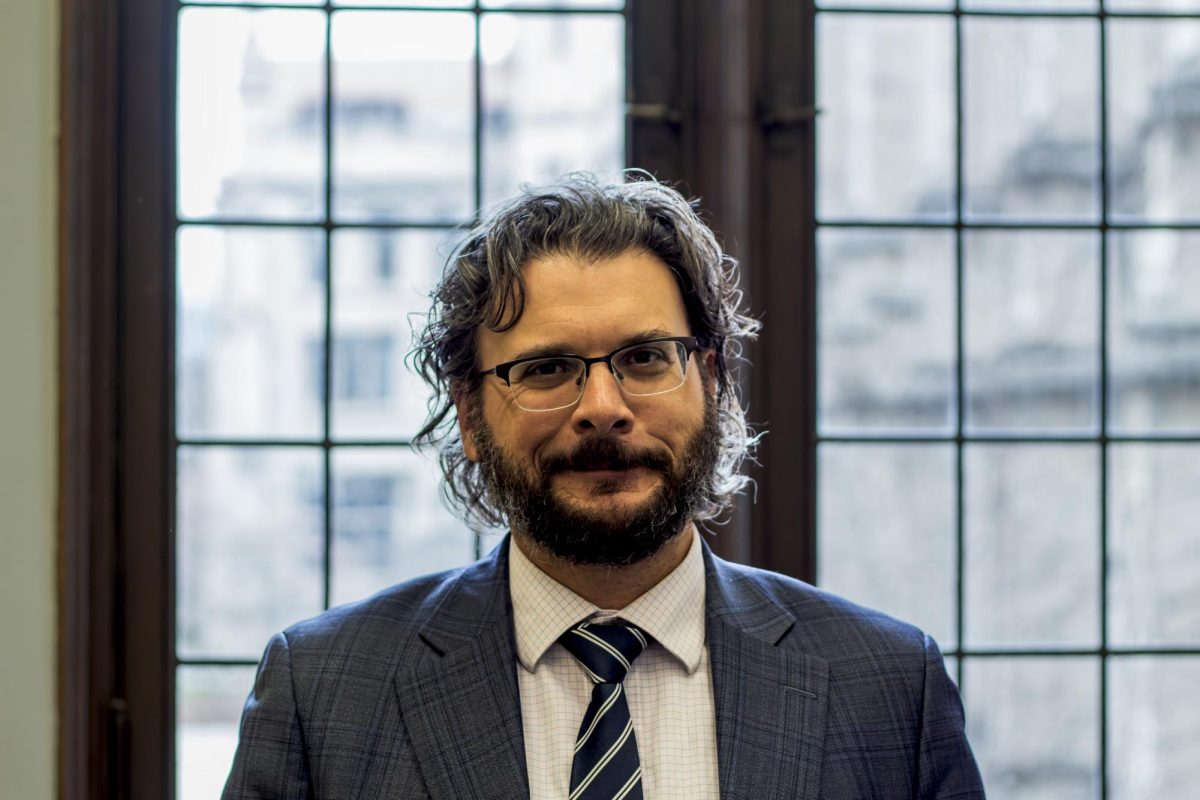Every time zombie novelist and University spokesperson Scott Kenemore writes a book, he’s told it will be his last.
“My publisher thought zombies were a trend at first. I’d do a book, and they’d be like, ‘Just so you know, Scott, this is probably going to be the last one,’” Kenemore said. “And now I’ve done seven.”
“I feel like a drug dealer, because they’re trying to quit, but can’t.”
Kenemore joined the University this past year as a communications associate at the Harris School of Public Policy. But his true passion involves pondering the moral complications surrounding the realm of the living dead.
“Some people think my entire preoccupation is just gross. Nasty zombies coming back from the dead. But I think they’re [a] riveting core icon that can create interesting narrative situations and conflicts in ways that other pop culture monsters often can’t,” he said.
He cited the division between good and evil as one such conflict.
“One of the wonderful things about zombies is that they create that stress test that forces you to think about those moral decisions. Am I a good guy or a bad guy? Would I kill this person for a flashlight if I really needed a flashlight?”
As part of that stress test, Kenemore prefers to design his monsters as non-threateningly as possible to emphasize the role of human, rather than zombie, fault and misjudgments on the destructive extent of an outbreak.
“I like to make my zombies the most desiccated, gross, and handicapped so that there’s just absolutely no excuse for getting eaten by one,” Kenemore said. And if someone does, according to Kenemore, it is due to “personal flaws like pride and overconfidence and arrogance and depending on social services that aren’t there in an outbreak.”
His most recent work, Zombie, Illinois, was released last month and draws upon his experiences working and living on the South Side of Chicago. Many of the characters in the book were based on people he’s met since moving to the city.
“I liked the idea of thinking about how different neighborhoods across the city would do in a zombie outbreak,” Kenemore said. “How would these institutions, how would these churches, community centers, these sheisty local politicians deal with the neighborhood? How would they do under a stress test like a zombie outbreak?”
Kenemore’s love of horror writing took root in his early childhood. It was during this time that he first discovered the stories of H.P. Lovecraft, which he deemed “the best thing anyone has ever done ever.” While attending Kenyon College in Gambier, Ohio—which served as inspiration for his sixth novel, Zombie, Ohio—he was introduced to George Romero’s now-classic zombie films, such as Night of the Living Dead.
After graduating from Columbia University’s Writing MFA program, Kenemore settled down as a “typical frustrated writer” with little luck getting his horror stories published.
“I’m still sort of finding my way. It’s weird being a writer, because I’m 35. I’m straight up old, but you get called a young writer until you’re about 45 because it’s very difficult to get a book published. It’s very difficult to get your name out there as a writer,” Kenemore said.
Kenemore started to write zombie novels at the suggestion of a friend in the publishing industry, quickly finding success in this new staple of the horror genre.
While some have written off zombies as a passing trend, Kenemore feels they are just beginning to find legitimacy.
“George Romero made Night of the Living Dead in 1968, and we’re still seeing the impact of that piece of art today. I think that’s how art works. It can take 50 years for the impact of good art to be felt and sink in. I think zombies are just starting to percolate to their appropriate place in the pop culture pantheon right now.”
Kenemore pointed out how the relative youth of zombie culture lends itself to further creative shaping.
“No one knew zombies could say ‘brains’ until 1985,” Kenemore said. “Someone out there is going to write the great zombie novel. That field is wide open.”










